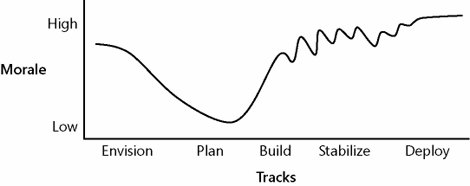| It might seem daunting to overcome environmental challenges especially because most seem beyond the control of a team. But without careful and proactive planning, challenges become obstacles. To prevent this from happening, an organization needs to assess quickly whether workarounds are available or whether they need to work through a challenge. The goal is to minimize the impact of any challenges that should present themselveswhich usually happens at the worst time possible. Here are a few ideas that can help a team start addressing and hopefully mitigating these challenges: Understand business directions, goals, and opportunities. Ensure project goals support business goals. Communicate with the business in an ongoing dialogue. Be as proactive as can be afforded. Align responsibilities and tasks based on team member strengths and weaknesses, increasing the odds of team members being able to work efficiently and effectively. Take a long-term view to solving challenges.
How much preventable planning is enough? How much is too much? At one extreme, a team that does little planning will need to address challenges reactively. At the other extreme, an organization can do so much proactive planning that it hinders its ability to execute. Ideally, an organization proactively puts measures in place to avoid or mitigate challenges while not adversely affecting its ability to deliver. A question for each organization to determine is: What is appropriate for a team given its circumstance(s)? Organizations often start out being more reactive and become more proactive as they see return on investment for their efforts. Effects of Project Team Morale on the Solution Delivery Life Cycle A team's ability to overcome challenges is heavily influenced by their morale as it evolves throughout the life cycle. It is natural that project team morale rises and falls as the team experiences various accomplishments and setbacks inherent in a solution delivery life cycle. Figure 2-3 exemplifies typical trends in team morale that I have observed over many years of managing projects. A team usually starts with high hopes and matching high morale. As a solution starts to be defined, team morale often starts to wane (i.e., project realities start to overcome kick-off glee). Most technology practitioners do not care much for the design portion of a project, but once construction starts, team morale usually starts increasing. As construction draws to a close, feature and function trade-offs start to sour the "fun" of building a solution, and team morale starts to oscillate between a set of highs and lows. This continues through solution stabilization such that team morale rises as a solution build is completed only to fall as test results show there are more issues to resolve. However, as a team gets closer to finishing solution stabilization, overall morale trends higher. When a solution is ready for deployment, morale is high once again from the team's renewed sense of pride. This morale high is tempered a bit as initial deployments usually encounter a few issues but returns to a high at the completion of deployment. Figure 2-3. Observed evolution of team morale throughout the solution delivery life cycle 
|
|
